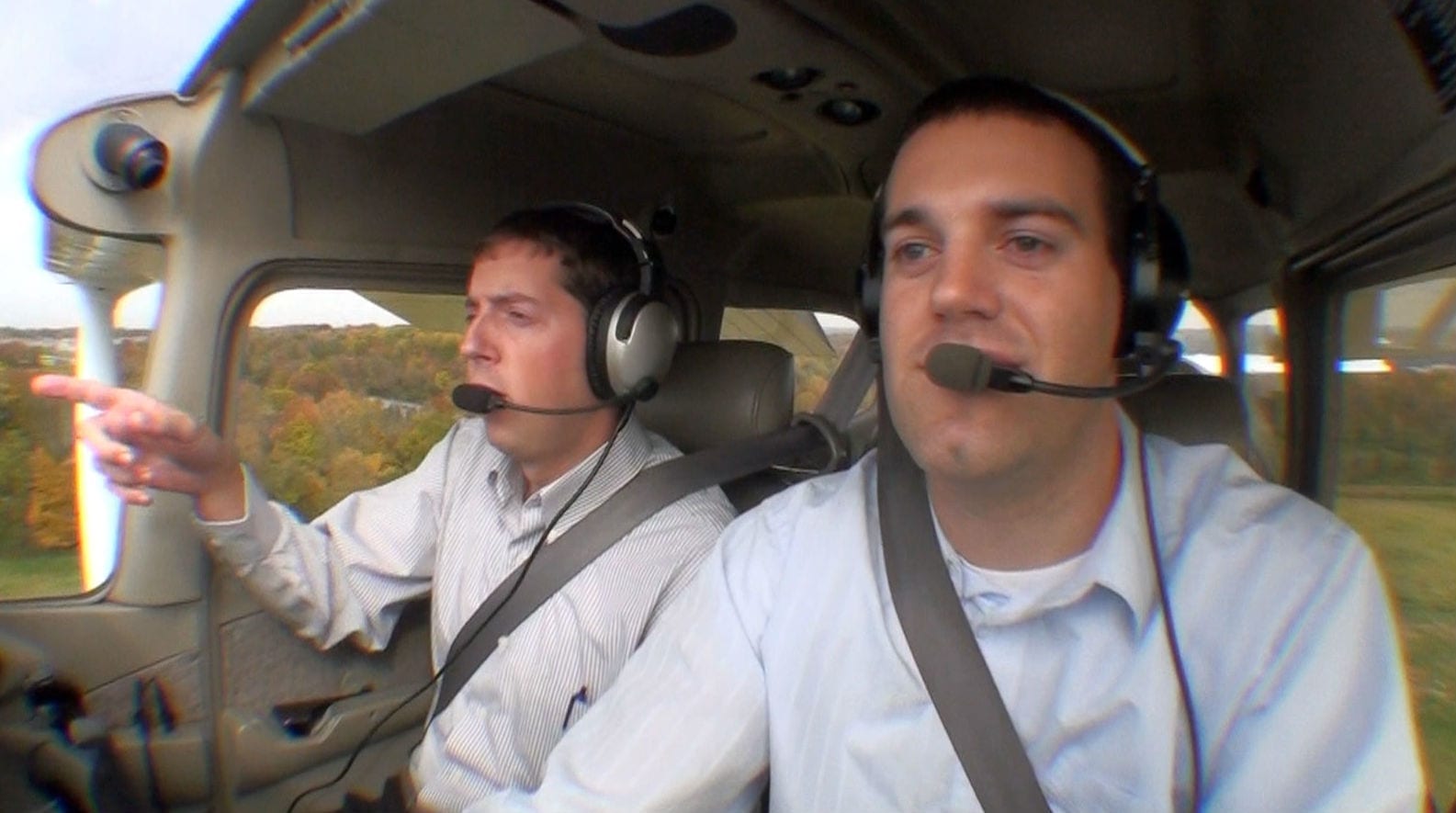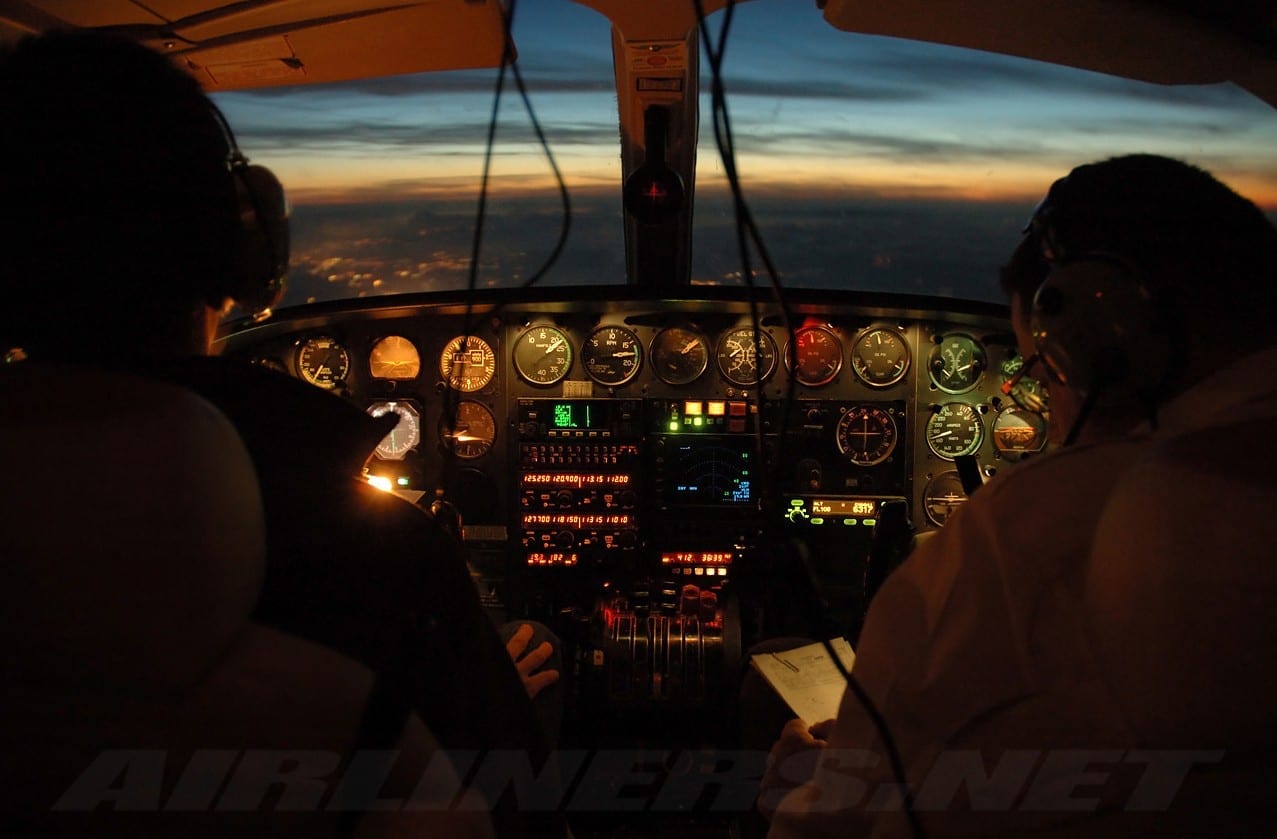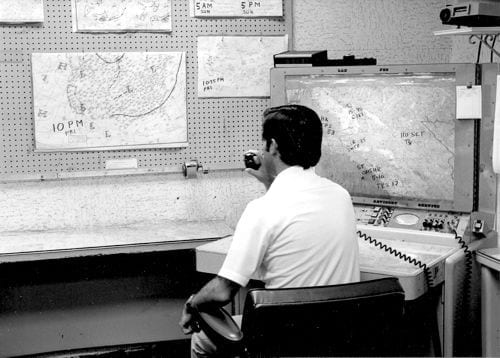I have been a flight instructor since August 24, 1953. A lot of water has passed under the bridge in that time and the current emphasis on better instruction and training safer pilots has made me ponder many things. Let’s talk about some of them for a bit and then see what you think.
Like most instructors, most of my activity came in a relatively short period of time after I became a CFI. The common trainers of the day were Cubs, Aeroncas and Cessna 140s. There was little organized ground school and for a time the written test was 25 true/false questions.
When flying, communicating with students was difficult. There were no intercoms and despite the diminutive size of the engines, the cabins were noisy. About the only time you could really talk to a student in flight was when gliding in for a landing, with the engine at idle power.
Most of us felt that our job was to explain things and then protect the student and the airplane as the student put together an idea about how to fly the airplane. Think bicycle.
The flight test for a CFI reflected this. The emphasis during the oral and flight test was on how well we could fly. Two-turn precision spins were a demanding maneuver, especially those done over the top of a steep turn as well as out of the bottom. Spot landings were a big deal as were ground reference maneuvers and things like lazy-eights and chandelles. In other words our piloting ability was tested, not our teaching ability. Our students learned to fly as opposed to being taught how to fly.
Many things have changed since then. To me the two greatest advances have been headsets and intercoms and the video prep courses from Sporty’s, King Schools, Jeppesen and other places.
We used to put a lot of thought into whether or not we had covered everything with the student. Had he seen and been exposed to everything he needed to be able to fly safely? Flying is much more complex today and those courses are a great aid to students and instructors. They cover everything and forget nothing.
Despite all the good things that have come along, I wonder if students are still learning to fly instead of being taught. The young CFIs who are building time on their way to somewhere else are far sharper than we were back in the good old days. They are way more professional, too. But are they teachers? For virtually all of them, that is not the goal. They want to be pilots.
When I wade through the theoretical gobbledy-gook that the FAA requires in the CFI renewal courses, I wonder how in the world it helps a CFI to be a better teacher. How does it help in the transfer of knowledge to students? It is no doubt written by professional educators but seems a case of the educator trying to illustrate how smart he is and how dumb you are. That is an easy case to make when you get to use double-talk. Flying safely requires a lot of common sense and many educators are not gifted in that area.
My question to pilots today is whether they think they were taught to fly or that they learned to fly. Was it an educational experience or a cut and try exercise?
My question to instructors today is much the same. Do you teach, or do they just learn? Anybody with the requisite amount of money can earn any FAA certificate, but as an instructor how can you make sure the student will be able to safely exercise the privileges of that certificate? And finally, as an instructor, have you ever told a person that he just doesn’t have the common sense and the ability to learn to fly and should spend his money on something else?
You have the floor.
- From the archives: how valuable are check rides? - July 30, 2019
- From the archives: the 1968 Reading Show - July 2, 2019
- From the archives: Richard Collins goes behind the scenes at Center - June 4, 2019












Dick,
My question in return to you is “are you teaching CFIs to teach?”
Sincerely,
Mark
I soloed in 1957, private in 1958, multi and commercial in 1959. I was the “airport kid” starting at age 12 and I never had many formal lessons. My learning was primarily self taught and hangar flying as well as flying with lots of different pilots in lots of different planes. I was absolutely obsessed with flying to the exclusion of other teen-age activities.
I doubt this kind of thing happens much today but I would not trade my experiences for anything. Unfortunately, I was not able to continue in an aviation career because my vision was marginal for requirements at that time. After I got married I discovered that supporting a preexisting family did not allow me to continue to fly. Since then, all of my flying has been reading and dreaming. But I still enjoy what I have and what I had.
That kind of thing does happen today! I am a young person who is obsessed with airplanes. I haven’t really been to a lot of general aviation airports, but I want to. I can’t wait until I’m old enough to actually fly.
I am known as the easy teacher but am actually just a fun teacher.learning to fly should be fun and rewarding.get out of the box,really learn how to fly and you should have no problem.I teach by example.I make it look easy,as it really is.get a good instructor and study hard and your investment in aviation will be worth the time and money.I am a teacher (cfii) and would feel bad if I just flew around with a student and just babysat while they learned on their own.I am always thinking of new ways to teach.I look forward to each lesson and love to watch my students mature into real aviaters
I know I spelled aviators wrong but Somehow I sent my post while trying to fix the spelling.Ouch.
I think for me it was a mixture of teaching by the instructor and learning on my own…I remember reading Gordon Baxter’s “How To Fly” in the 80’s…I imagined very carefully what it would be like to solo, learned why airplanes stall, and thought about the cross countries to come… I remember “learning” (on my own) standard atmosphere (59F / 15C / 29.92 / 1013.2mb; squawk codes 7700, 7600, 7500 etc etc..).. that was all learning… the teaching came when I saw instructors DO things I had never seen—too high? pull the power back and add full full flaps, trim up, drop like a stone… forward slips…asking ATC for specific requests, showing me things on sectionals like rwy lengths and frequencies, how to talk to flight service in the air…come to think of it, maybe most of it was me learning (or observing) rather than true teaching.. but maybe that’s OK….
I “learned” to fly at a good school, with a couple of good instructors. That was in 1975. I got through it all in the minimum time and at budget. But I was not comfortable and I searched around for additional help. It came from a guy who was a crop duster and who filled the gaps in the off season with instructing. He picked horrible weather days, short fields and his home base was at 4200 ft MSL. He turned off landing lights, quietly turned off fuel tanks and ciruit breakers, wrestled the controls from me on occasion and got me lost several times. There was little if any standard flying. I will be forever grateful.
How do birds teach their young to fly? About the same way we do; but without the King videos to point out the nuances of avoiding TFRs. It’s not that bad a system.
I’m a new CFI. I’m teaching part time now and plan to teach full time when I retire in a few years. Learning to teach the FAA way and real world teaching are two different things. Don’t get me wrong, I’ve picked out some real nuggets of information from the FAA material. I’m still learning what works and what doesn’t. We can teach until we turn blue, but it’s up to the student to learn. How much can we teach on the way to the PPL? I like to think that I go above and beyond the minimum, but its important that the student understand that flying requires continuous lifetime learning. Earning the PPL is not the end of learning. That’s my opinion at this time. Ask me again in a few years.
I learned to fly in spite of my instructors. This was partly my fault for allowing it to happen but not that I look back on it I laugh at what I got away with while no one was watcing. I did end up with a real teacher who taught me the things I needed to know to pass the test.
I had a wonderful instructor. I was 27 he was 24 and fresh out of Emery Riddle. Constant communication and it helped that I took lessons 4-5 per week. Incredible learning experience.
It took me nearly 36 years of starting and stopping as money and time allowed to earn my certificate. Over those years, I had many instructors, some of whom were educators and some of whom were demonstrators. I learned from both. My favorites were those who were both skilled pilots and loved being CFIs. The ones who were killing time until they moved on to the “bigs” were generally not as highly skilled and made it clear they were doing me a favor to teach me before they moved on. They taught me something very important – I was the customer and I could fire them. Which I learned to do without hesitation.
I must have been lucky, because I was definitely *taught* how to fly. From both career instructors, and young guys buying time for the airlines. And also just from flying with other pilots! There’s a lot of learning to be found outside of formal instruction. Having said that, reflecting back on my last 2-3 BFRs and ICCs, they were with the young guys building time, and I don’t feel I learned a thing from them. So next time I need a check ride I will definitely hunt for an *teacher* not just a certified instructor.
I started learning to fly by the seat of my pants in ultralights over 20 years ago. Fortunately my luck hadn’t run out by the time I started my training at Adelaide Biplanes. I walked in cock sure I would have my license in a couple of weeks and that would be that. Fortunately the crew down there are first class teachers and once I started listening to them I started on the path of a proper Aviator.
In my opinion it is much better to be taught the proper way to do things and practice to the point it becomes a reflex than to learn from your mistakes on your own. I still make mistakes but now I can analyse them from my instruction and with the guidance of a teacher to help lower the likelihood the set of events that led to the mistake happening again.
Thanks to the great teachers at Adelaide Biplanes I am on my way to my CPL-MECIR (with UniSA) with the goal of becoming an instructor and teaching as many people as I can how to be safe and happy Aviators.
Hello Mr. Collins
You have tought me some things through your videos and books. I have most of them. I’m a Johnny come lately, as I didn’t take my first lesson until I was 40. Now 52 I’m an MEI and have enjoyed all aviation has given me, learning, and teaching is good stuff when it’s about airplanes. As for learned or tought? I think both. Thanks for everything.
A college or graduate degree is a license to learn. Same for a private pilot certificate. I think we present how to do the required maneuvers and procedures in the correct manner. Then the aeronautical student really begins to learn on his/her own, especially after obtaining the private pilot certificate. I had a professor in medical school who began the year saying the pathology faculty would help us learn, and that there would not be much teaching.
If you have the hunger to learn to fly you will learn from all of the diffeent types of instructors, books, and courses. Do not allow yourself to be turnd off by any style of instruction.
One of the best instructors once told me, “when it’s time to stop learning, it’s time to stop flying”. He was absolutely right. You can learn from others and you can learn from yourself. I think most of my instructors were the “hour builders” and really didn’t have much interest in instructing. Maybe there is a lesson in that. My best instructors were as good at listening as they were at talking. Some of my questions went unanswered until I found the answer myself, maybe not a bad thing in most cases.
@David. :-) Perfect.
As an instructor i believe the most important thing instructors can do is to. Understand what type of personality you are teaching and adapt to the students learning style. Probably the number one technique that works for every one is “know when to shut up and let the student practice using thier own thoughts”.
Demonstrate direct monitor !!!!! 3-5 minutes of silence can achieve as much as 2 hours of rebriefing under the right circumstances.
There are many reasons people have problems learning how to fly. Basically, the system teaches how airplanes fly but not how to control the flight. Does any pilot really need to know about Bernoulli. I already believe the airplane will fly when I walk up to it.
What a pilot does is let the thing fly. The only thing he does is push and pull the throttle, rudders, and control wheel.
The airplane goes whichever way it is pointed by use of the controls.
The biggest problem is pulling the control wheel. All pilots are trained to do that with most maneuvering. Try setting the elevator trim at Vy, then start, taxi, takeoff, climb, cruise, maneuver, descend to round-out for landing. See, coordinated power during all this works just fine.
What causes most crashes? Pulling the control wheel. What causes stall? Pulling the control wheel.
What happened then is we let engine thrust do the lifting for all change of attitude in all maneuvering.
Try it, you’ll like it. The aircraft can’t stall on any base to final turn if you aren’t pulling, no matter what you do with the other controls.
What is missing in all curriculum is how to control. All texts are wrong and the total pilot group was never taught correctly.
I was taught to fly. Unfortunately the kid (15 years my junior) was more of a hotshot rather than an instructor, however we both survived and I acquired “skills” that perhaps I should not have had. Examples, I know had to ride a ground effect wake flying 20 feet over a bay, I learned how to land in crosswinds in a rainstorm, fly 10 feet over a farmers field when practicing engine out procedures and how to fly in icing at night in a 300 mile cross country. Fortunately he did teach me enough of the FAA things that I was able to pass my check ride with just a few over the required. Looking back I am amazed that I am still alive but I do have to give him props for one thing… Crosswinds and a little reasonable rain don’t strike terror as I have seen them before. I was his “first” student and in truth he went on to a successful career in aviation and I immediately mellowed and realized “WHAT was I thinking!” I am guessing so did he. Now I bark at the people that enter an uncontrolled airport on crosswind or fly so low that you can smell the avgas when they pass over. I am very glad for the one thing I did have the nerve to say no to during training. I can proudly say I have never flown under a bridge!